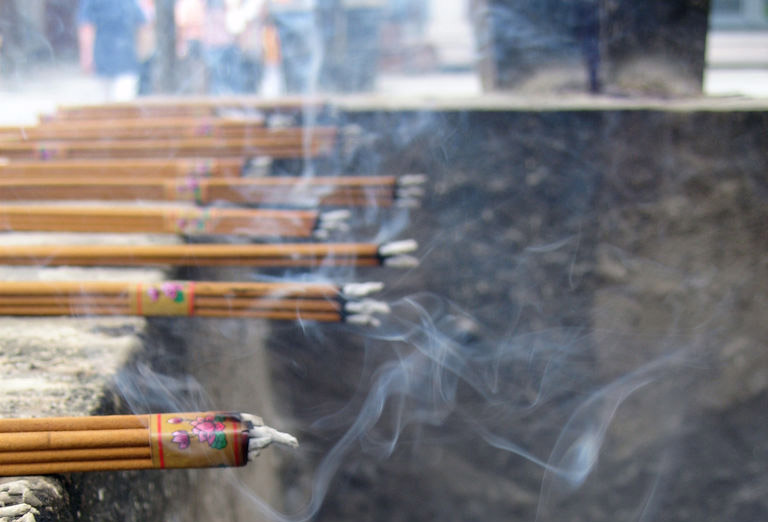|
Sacrifice In Maya Culture
Sacrifice was a religious activity in Maya culture, involving the killing of humans or animals, or bloodletting by members of the community, in rituals superintended by priests. Sacrifice has been a feature of almost all pre-modern societies at some stage of their development and for broadly the same reason: to propitiate or fulfill a perceived obligation towards the gods. Crisis and sacrifice What is known of Mayan ritual practices comes from two sources: the extant chronicles and codices of the missionary-ethnographers who arrived with or shortly after the Spanish conquest of Yucatán, and subsequent archaeological data. The historical record is more sparse than that for the Aztecs,Bancroft 1882, p. 687. and can only be reliable in regards to the Post-Classical period, long after the Classic Maya collapse. The chroniclers have also been accused of colonial bias, but the most comprehensive account of Maya society, by Diego de Landa, has been described by modern experts as a ... [...More Info...] [...Related Items...] OR: [Wikipedia] [Google] [Baidu] |
Maya Civilization
The Maya civilization () was a Mesoamerican civilization that existed from antiquity to the early modern period. It is known by its ancient temples and glyphs (script). The Maya script is the most sophisticated and highly developed writing system in the pre-Columbian Americas. The civilization is also noted for its art, architecture, mathematics, calendar, and astronomical system. The Maya civilization developed in the Maya Region, an area that today comprises southeastern Mexico, all of Guatemala and Belize, and the western portions of Honduras and El Salvador. It includes the northern lowlands of the Yucatán Peninsula and the Guatemalan Highlands of the Sierra Madre, the Mexican state of Chiapas, southern Guatemala, El Salvador, and the southern lowlands of the Pacific littoral plain. Today, their descendants, known collectively as the Maya, number well over 6 million individuals, speak more than twenty-eight surviving Mayan languages, and reside in nearly the s ... [...More Info...] [...Related Items...] OR: [Wikipedia] [Google] [Baidu] |
Cult Image
In the practice of religion, a cult image is a Cultural artifact, human-made object that is venerated or worshipped for the deity, Spirit (supernatural entity), spirit or Daimon, daemon that it embodies or represents. In several traditions, including the ancient religions of Ancient Egypt, Egypt, Ancient Greece, Greece and Rome, and Hinduism, cult images in a temple may undergo a daily routine of being washed, dressed, and having food left for them. Processions outside the temple on special feast days are often a feature. Religious images cover a wider range of all types of images made with a religious purpose, subject, or connection. In many contexts "cult image" specifically means the most important image in a temple, kept in an inner space, as opposed to what may be many other images decorating the temple. The term idol is an image or representation of a god used as an object of worship, while idolatry is the worship of an "idol" as though it were God. Ancient Near East and E ... [...More Info...] [...Related Items...] OR: [Wikipedia] [Google] [Baidu] |
Auto-da-fé
An ''auto-da-fé'' ( ; from Portuguese language, Portuguese or Spanish language, Spanish (, meaning 'act of faith') was a ritualized or public penance carried out between the 15th and 19th centuries in condemnation of heresy, heretics, Apostasy, apostates, and especially Jews. It was imposed by the Spanish Inquisition, Spanish, Portuguese Inquisition, Portuguese, or Mexican Inquisition as punishment and enforced by civil authorities. Its most extreme form was death by burning. History The Inquisition was officially established to root out heresy, particularly among ''conversos'' (Jews and Muslims who had converted to Christianity but were suspected of secretly practicing their former faiths). There was a growing concern that these groups threatened the religious and social fabric of Spain. From that point, Spain became a political melange of different powers and territories, each with its own policies regarding the status of Jews and Muslims. By the 13th century almost all of ... [...More Info...] [...Related Items...] OR: [Wikipedia] [Google] [Baidu] |
Inquisition
The Inquisition was a Catholic Inquisitorial system#History, judicial procedure where the Ecclesiastical court, ecclesiastical judges could initiate, investigate and try cases in their jurisdiction. Popularly it became the name for various medieval and reformation-era state-organized tribunals whose aim was to combat Christian heresy, heresy, apostasy, blasphemy, witchcraft, and customs considered to be Deviance (sociology), deviant, using this procedure. Violence, isolation, torture or the threat of its application, have been used by the Inquisition to extract confessions and denunciations. Studies of the records have found that the overwhelming majority of sentences consisted of penances, but convictions of unrepentant heresy were handed over to the secular courts for the application of local law, which generally resulted in execution or life imprisonment. Inquisitions with the aim of combatting religious sedition (e.g. apostasy or heresy) had their start in the Christianity ... [...More Info...] [...Related Items...] OR: [Wikipedia] [Google] [Baidu] |
Incense
Incense is an aromatic biotic material that releases fragrant smoke when burnt. The term is used for either the material or the aroma. Incense is used for aesthetic reasons, religious worship, aromatherapy, meditation, and ceremonial reasons. It may also be used as a simple deodorant or insect repellent. Incense is composed of aromatic plant materials, often combined with essential oils. The forms taken by incense differ with the underlying culture, and have changed with advances in technology and increasing number of uses. Incense can generally be separated into two main types: "indirect-burning" and "direct-burning." Indirect-burning incense (or "non-combustible incense") is not capable of burning on its own, and requires a separate heat source. Direct-burning incense (or "combustible incense") is lit directly by a flame and then fanned or blown out, leaving a glowing ember that smoulders and releases a smoky fragrance. Direct-burning incense is either a paste formed around a ... [...More Info...] [...Related Items...] OR: [Wikipedia] [Google] [Baidu] |
Idolatry
Idolatry is the worship of an idol as though it were a deity. In Abrahamic religions (namely Judaism, Samaritanism, Christianity, Islam, and the Baháʼí Faith) idolatry connotes the worship of something or someone other than the Abrahamic God as if it were God. In these monotheistic religions, idolatry has been considered as the "worship of false gods" and is forbidden by texts such as the Ten Commandments. Other monotheistic religions may apply similar rules. For instance, the phrase '' false god'' is a derogatory term used in Abrahamic religions to indicate cult images or deities of non-Abrahamic Pagan religions, as well as other competing entities or objects to which particular importance is attributed. Conversely, followers of animistic and polytheistic religions may regard the gods of various monotheistic religions as "false gods" because they do not believe that any real deity possesses the properties ascribed by monotheists to their sole deity. Atheists, who do n ... [...More Info...] [...Related Items...] OR: [Wikipedia] [Google] [Baidu] |
Yucatán Peninsula
The Yucatán Peninsula ( , ; ) is a large peninsula in southeast Mexico and adjacent portions of Belize and Guatemala. The peninsula extends towards the northeast, separating the Gulf of Mexico to the north and west of the peninsula from the Caribbean Sea to the east. The Yucatán Channel, between the northeastern corner of the peninsula and Cuba, connects the two bodies of water. The peninsula is approximately in area. It has low relief and is almost entirely composed of porous limestone. The peninsula lies east of the Isthmus of Tehuantepec, the narrowest point in Mexico separating the Atlantic Ocean, including the Gulf of Mexico and Caribbean Sea, from the Pacific Ocean. Some consider the isthmus to be the geography, geographic boundary between Central America and the rest of North America, placing the peninsula in Central America. Politically, all of Mexico, including the Yucatán, is generally considered part of North America, while Guatemala and Belize are considered pa ... [...More Info...] [...Related Items...] OR: [Wikipedia] [Google] [Baidu] |
Apostasy
Apostasy (; ) is the formal religious disaffiliation, disaffiliation from, abandonment of, or renunciation of a religion by a person. It can also be defined within the broader context of embracing an opinion that is contrary to one's previous religious beliefs. One who undertakes apostasy is known as an apostate. Undertaking apostasy is called apostatizing (or apostasizing – also spelled apostacizing). The term ''apostasy'' is used by sociology, sociologists to mean the renunciation ''and'' criticism of, or opposition to, a person's former religion, in a technical sense, with no pejorative connotation. Occasionally, the term is also used metaphorically to refer to the renunciation of a non-religious belief or cause, such as a political party, social movement, or sports team. Apostasy is generally not a self-definition: few former believers call themselves apostates due to the term's negative connotation. Many religious groups and some states punish apostates; this may be the ... [...More Info...] [...Related Items...] OR: [Wikipedia] [Google] [Baidu] |
Roman Catholicism In Spain
The Spanish Catholic Church, or Catholic Church in Spain, is part of the Catholic Church under the spiritual leadership of the Pope in Holy See, Rome, and the Spanish Episcopal Conference. The Spanish Constitution of 1978 establishes the non-denominationality of the State, providing that the public authorities take into account the religious beliefs of society, maintaining cooperative relations with the Catholic Church and other confessions. Thus, the relations between the Spanish State and the Holy See are regulated by the 1976 agreement and the three 1979 agreements, which modified and replaced the previous 1953 concordat. History According to , Christianity could have been present in Spain from a very early period. Paul the Apostle, St. Paul intended to go to Hispania to preach the gospel there after visiting the Romans along the way. But there is no clear evidence if he ever made it. After 410 AD, Spain was taken over by the Visigoths who had been converted to Arian ... [...More Info...] [...Related Items...] OR: [Wikipedia] [Google] [Baidu] |
Baʿal
Baal (), or Baʻal, was a title and honorific meaning 'owner' or 'lord' in the Northwest Semitic languages spoken in the Levant during antiquity. From its use among people, it came to be applied to gods. Scholars previously associated the theonym with solar cults and with a variety of unrelated patron deities, but inscriptions have shown that the name Ba'al was particularly associated with the storm and fertility god Hadad and his local manifestations. The Hebrew Bible includes use of the term in reference to various Levantine deities, often with application towards Hadad, who was decried as a false god. That use was taken over into Christianity and Islam, sometimes under the form Beelzebub in demonology. The Ugaritic god Baal (𐎁𐎓𐎍) is the protagonist of one of the lengthiest surviving epics from the ancient Near East, the Baal Cycle. Name Epithets Ba'al's widely used epithet is "rider (or mounter) of the clouds." (''rkb ʿrpt'', cf. ''rkb bʿrbt'' in P ... [...More Info...] [...Related Items...] OR: [Wikipedia] [Google] [Baidu] |
Fertility
Fertility in colloquial terms refers the ability to have offspring. In demographic contexts, fertility refers to the actual production of offspring, rather than the physical capability to reproduce, which is termed fecundity. The fertility rate is the average number of children born during an individual's lifetime. In medicine, fertility refers to the ability to have children, and infertility refers to difficulty in reproducing naturally. In general, infertility or subfertility in humans is defined as not being able to conceive a child after one year (or longer) of unprotected sex. The antithesis of ''fertility'' is infertility, while the antithesis of ''fecundity'' is sterility. Demography In demographic contexts, fertility refers to the actual production of offspring, rather than the physical capability to produce which is termed fecundity. While fertility can be measured, fecundity cannot be. Demographers measure the fertility rate in a variety of ways, which can be broa ... [...More Info...] [...Related Items...] OR: [Wikipedia] [Google] [Baidu] |
Lady
''Lady'' is a term for a woman who behaves in a polite way. Once used to describe only women of a high social class or status, the female counterpart of lord, now it may refer to any adult woman, as gentleman can be used for men. "Lady" is also a formal title in the United Kingdom. "Lady" is used before the family name or peerage of a woman with a title of nobility or honorary title '' suo jure'' (in her own right), such as female members of the Order of the Garter and Order of the Thistle, or the wife of a lord, a baronet, Scottish feudal baron, laird, or a knight, and also before the first name of the daughter of a duke, marquess, or earl. Etymology The word comes from Old English '; the first part of the word is a mutated form of ', "loaf, bread", also seen in the corresponding ', "lord". The second part is usually taken to be from the root ''dig-'', "to knead", seen also in dough; the sense development from bread-kneader, or bread-maker, or bread-shaper, to the ordina ... [...More Info...] [...Related Items...] OR: [Wikipedia] [Google] [Baidu] |








